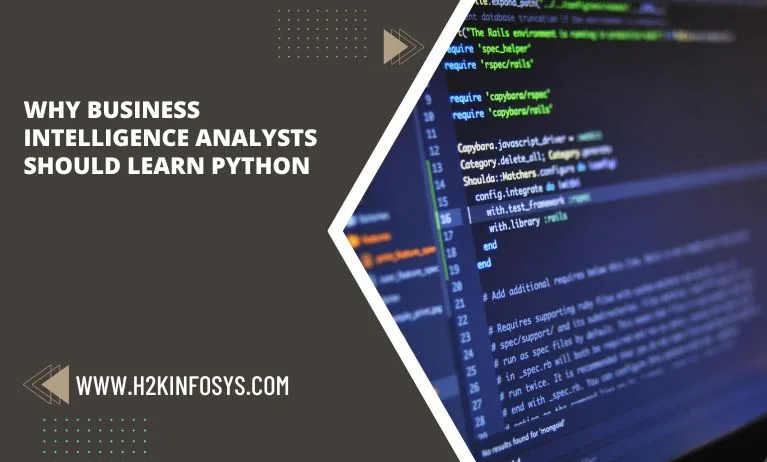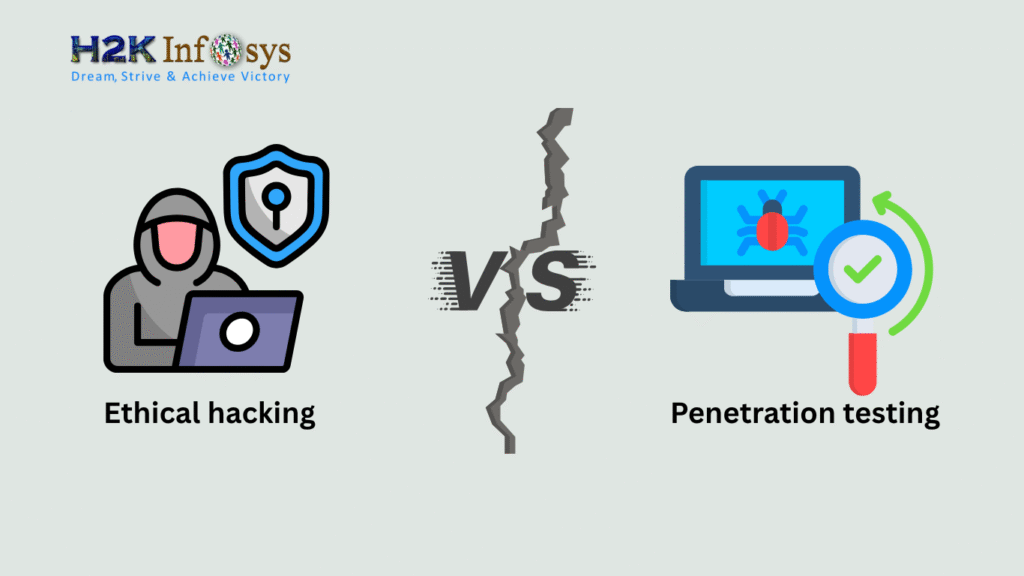Introduction
In today’s data-driven world, Business Intelligence (BI) Analysts play a critical role in helping organizations make informed decisions. These professionals bridge the gap between data and actionable insights, empowering businesses to stay competitive. However, the traditional tools and techniques for data analysis are no longer sufficient in a rapidly evolving industry. Learning Python, one of the most versatile programming languages, has become essential for BI Analysts looking to enhance their careers.
If you’re a BI Analyst or aspiring to become one, enrolling in an Online Class For Python could be a game-changer. Python’s simplicity, versatility, and robust ecosystem make it an invaluable tool for modern data analysis and visualization. In this blog, we’ll explore why Python is a must-have skill for BI Analysts and how you can benefit from a Python programming language certification or a Python programming online course from H2K Infosys.
The Evolution of the BI Analyst.
The job of a business intelligence analyst has changed significantly during the last 20 years. Big data’s emergence and ever-expanding data quantities have increased the need for sophisticated BI platforms and tools to aid analysts in making sense of their organisation’s data.
Analysts used Excel, SQL, or basic BI tools in the late 1990s and early 2000s to analyse and visualise data for their firms. But with the introduction of technologies like Power BI, Tableau, and Qlik, current analysts are expected to be proficient in a variety of tools in their daily work.
Modern analysts are expected to be professionals in reaching out, in addition to technical proficiency in specialised instruments. This indicates that for the modern analyst, having good project management abilities, subject expertise, storytelling abilities, and communication abilities are prerequisites.
Now that we have that in mind, let’s go back to the original opening question: Should business intelligence analysts learn to code? Yes is the answer.
Although mastering programming skills can assist analysts expedite the value they bring firms and help them stand out from the competition in the job market, many business intelligence professions may not require them. The five main justifications for business intelligence analysts learning how to code are listed below. For more information, check out the Online Python Certification course.
Why Python for Business Intelligence Analysts?
1. Ease of Learning and Accessibility
Python’s syntax is straightforward and resembles plain English, making it accessible even for beginners with no prior programming experience. Unlike complex programming languages, Python allows BI Analysts to focus on solving problems rather than deciphering code.
Example: A simple Python script to calculate the total sales for a given dataset:lyst.
sales = [1200, 1500, 1700, 1300, 1800]
total_sales = sum(sales)
print(f"Total Sales: ${total_sales}")With just a few lines of code, analysts can perform tasks that might take significantly longer in traditional BI tools.
2. Powerful Data Manipulation and Analysis Libraries
Python’s rich ecosystem of libraries makes it a powerhouse for data analysis. Libraries like Pandas, NumPy, and SciPy provide advanced tools for data manipulation and statistical analysis, essential for BI Analysts.
Key Features:
- Pandas: Ideal for working with structured data like CSV files or SQL databases.
- NumPy: Optimized for numerical computations and handling large datasets.
- SciPy: Perfect for scientific and technical computations.
Case Study: A global retail company used Python’s Pandas library to clean and analyze millions of sales records. This enabled them to identify purchasing trends and optimize inventory, resulting in a 20% increase in efficiency.
3. Advanced Data Visualization
Effective data visualization is crucial for BI Analysts to communicate insights. Python offers powerful visualization libraries such as Matplotlib, Seaborn, and Plotly, enabling analysts to create interactive and visually appealing dashboards.
Example: Using Matplotlib to create a sales trend chart:
import matplotlib.pyplot as plt
days = ['Mon', 'Tue', 'Wed', 'Thu', 'Fri']
sales = [1200, 1500, 1700, 1300, 1800]
plt.plot(days, sales, marker='o')
plt.title('Sales Trend')
plt.xlabel('Day')
plt.ylabel('Sales ($)')
plt.show()Python’s visualization capabilities surpass those of traditional BI tools, offering greater customization and interactivity.
4. Integration with BI Tools and Databases
Python integrates seamlessly with popular BI tools like Tableau, Power BI, and Looker, as well as databases such as MySQL, PostgreSQL, and MongoDB. This interoperability allows BI Analysts to leverage Python for advanced data manipulation while continuing to use their preferred BI platforms for reporting.
Real-World Application: A financial services firm integrated Python with Power BI to automate data preparation, reducing manual effort by 40% and enabling real-time insights.
5. Machine Learning and Predictive Analytics
Python’s capabilities extend beyond traditional BI functions. Libraries like Scikit-learn and TensorFlow enable BI Analysts to build machine learning models for predictive analytics, opening doors to advanced career opportunities.
Example: A BI Analyst can use Python to predict customer churn rates based on historical data, enabling proactive retention strategies.
from sklearn.ensemble import RandomForestClassifier
# Example data
data = [[25, 500], [35, 1000], [45, 800]]
labels = [0, 1, 1] # 0 = not churned, 1 = churned
model = RandomForestClassifier()
model.fit(data, labels)
prediction = model.predict([[30, 600]])
print(f"Churn Prediction: {prediction}")Benefits of Python Certification for BI Analysts
1. Credibility and Recognition
Earning a Python programming language certification demonstrates your expertise and commitment to professional growth. Certifications from reputable institutions like H2K Infosys are recognized globally, giving you a competitive edge in the job market.
2. Hands-On Learning Experience
Enrolling in an online Python class provides practical exposure through real-world projects, preparing you to tackle industry challenges confidently.
3. Higher Earning Potential
Certified Python professionals often command higher salaries. According to industry reports, Python-certified BI Analysts earn up to 20% more than their non-certified counterparts.
4. Broader Career Opportunities
Python proficiency opens doors to roles beyond traditional BI, such as Data Scientist, Machine Learning Engineer, and Data Engineer.
Why Choose H2K Infosys for Python Training?
Comprehensive Curriculum
Our Python programming online course covers everything from basic syntax to advanced data analytics, ensuring you master the skills needed for success.
Expert Instructors
Learn from industry experts with years of experience in Python and Business Intelligence.
Flexible Learning
With our online Python classes, you can learn at your own pace, balancing your studies with professional commitments.
Real-World Projects
Gain hands-on experience through practical assignments and projects, simulating real-world BI challenges.
Certification
Earn a globally recognized certification in Python programming upon course completion, boosting your career prospects.
Key Takeaways
- Python is a must-have skill for BI Analysts, offering advanced data manipulation, visualization, and integration capabilities.
- Enrolling in an online class for Python from H2K Infosys equips you with industry-relevant skills and a competitive edge.
- A Python programming language certification enhances credibility, earning potential, and career opportunities.
- Real-world applications and hands-on projects ensure you’re job-ready.
Conclusion
Python is transforming the field of Business Intelligence, enabling analysts to deliver deeper insights and greater value. By enrolling in H2K Infosys’ Python programming online course, you’ll gain the skills, knowledge, and certification needed to excel in your career. Don’t miss the opportunity to stay ahead in the competitive BI landscape.
Ready to level up your career? Enroll in H2K Infosys’ Python classes today and unlock your potential as a BI Analyst!

























